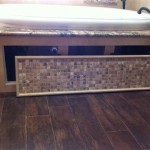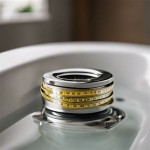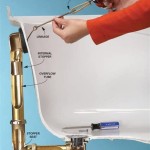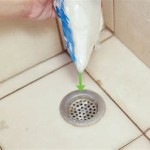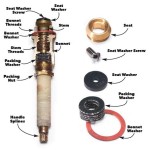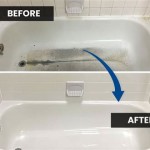Average Cost Of Acrylic Bathtub Liners Installed
Acrylic bathtub liners offer a practical solution to revitalize worn, damaged, or outdated bathtubs without the extensive demolition and expense associated with complete bathtub replacement. These liners are custom-molded to fit precisely over an existing bathtub, providing a seamless and durable surface. Understanding the factors influencing the average cost of acrylic bathtub liners installed is crucial for homeowners considering this renovation option.
The cost of an acrylic bathtub liner installation is influenced by a variety of parameters, ranging from the bathtub's size and shape to the regional labor costs in the installation area. The following sections provide a comprehensive overview of these factors, offering a detailed understanding of the typical price range and what contributes to the overall expense.
Acrylic is a popular material for bathtub liners due to its non-porous nature, which resists mold and mildew growth. It’s also easy to clean and maintain, making it a desirable choice for many homeowners. Furthermore, acrylic liners can often be installed in as little as a day, minimizing disruption to the household compared to a full bathtub replacement, which can take several days or even weeks, depending on the extent of the plumbing work required.
Key Cost Factors Affecting Bathtub Liner Installation
Several key factors significantly influence the overall cost of an acrylic bathtub liner installation. These include the bathtub’s dimensions, the complexity of the installation process, the quality of the materials used, and the regional variation in labor costs. A thorough understanding of these elements is essential for accurate budgeting and informed decision-making.
Bathtub Size and Shape: The dimensions of the existing bathtub are a primary determinant of the liner's cost. Larger bathtubs require more material, resulting in a higher price. Similarly, unusual shapes or custom designs can increase the cost due to the complexity of the molding process required to create a perfectly fitting liner. Standard rectangular bathtubs typically cost less to line than corner units, jacuzzi tubs, or bathtubs with intricate features.
Material Quality and Thickness: Acrylic bathtub liners vary in quality and thickness. Thicker liners are generally more durable and resistant to cracking and chipping, but they also come at a higher cost. Some liners are made from 100% acrylic, while others are a blend of acrylic and other materials, such as ABS plastic. 100% acrylic liners tend to be more expensive but offer superior longevity and aesthetics.
Installation Complexity: The complexity of the installation process can significantly affect the total cost. If the existing bathtub requires extensive preparation, such as repairing structural damage or addressing plumbing issues, the overall cost will increase. Additionally, if the installation area is difficult to access or requires specialized tools, labor costs may be higher. The presence of existing features, such as shower doors or tile surrounds, can also complicate the installation, adding to the expense.
Regional Labor Costs: Labor costs vary significantly depending on the geographic location. Areas with a higher cost of living typically have higher labor rates for contractors and installers. Obtaining multiple quotes from local contractors is crucial to ensure a competitive price and to understand the prevailing labor rates in the specific region. It is also imperative to check the contractor's licensing, insurance, and references before committing to the project.
Additional Features and Customizations: The addition of custom features, such as grab bars, soap dishes, or integrated seating, will increase the overall cost of the bathtub liner installation. Similarly, choosing a specific color or texture for the liner can also affect the price. Premium colors or textured finishes may require specialized manufacturing processes, which can add to the overall expense. Homeowners should carefully consider which features are essential and which are merely aesthetic preferences to balance cost and functionality.
Removal and Disposal of Old Fixtures: In some cases, the existing bathtub may need to be removed before the liner can be installed. This process can add to the overall cost, including the labor for removal and the expense of disposing of the old bathtub. Some contractors include this service in their initial quote, while others charge it as a separate line item. It's important to clarify whether removal and disposal are included in the quoted price to avoid unexpected costs.
Warranty and Guarantee: The warranty offered by the manufacturer and the installer can also influence the perceived cost of the bathtub liner. A longer warranty period provides greater peace of mind and protection against defects or installation errors. However, liners with longer warranties may be more expensive upfront. Homeowners should carefully review the terms and conditions of the warranty to understand the coverage and any limitations.
Typical Price Ranges for Acrylic Bathtub Liner Installation
The average cost of an acrylic bathtub liner installation typically falls within a specific price range, but this range can vary depending on the factors previously discussed. Understanding the general price points can help homeowners establish realistic expectations and effectively budget for the project.
For a standard-sized bathtub, the cost of an acrylic liner installation can range from $2,000 to $5,000. This range typically includes the cost of the liner itself, the necessary adhesives and sealants, and the labor for installation. However, this is a generalized estimate, and the actual cost may be higher or lower depending on the specific circumstances of the project.
Smaller bathtubs or those with simpler designs may fall on the lower end of the price range, while larger bathtubs, custom designs, or installations with additional features can increase the cost to the higher end or even beyond. It's important to obtain quotes from multiple contractors to get a more accurate estimate based on the specific dimensions and characteristics of the existing bathtub.
The cost of the liner itself generally accounts for a significant portion of the overall expense. High-quality acrylic liners made from thicker materials and with advanced features, such as antimicrobial coatings, will typically cost more than basic, thinner liners. Homeowners should carefully evaluate the quality and features of different liners to determine the best value for their needs and budget.
Labor costs can also vary considerably depending on the contractor's experience, the complexity of the installation, and the regional labor rates. Some contractors may charge a flat fee for the installation, while others may charge an hourly rate. It's important to clarify the contractor's pricing structure and to obtain a detailed breakdown of all costs before committing to the project.
In addition to the cost of the liner and installation, homeowners should also factor in any potential additional expenses, such as permits or inspection fees. Some municipalities may require permits for bathtub liner installations, and these permits can add to the overall cost. It's important to check with the local building department to determine whether a permit is required for the project.
Factors to Consider Before Installing an Acrylic Bathtub Liner
While acrylic bathtub liners provide a convenient and cost-effective solution for updating a bathtub, a few factors should be considered before proceeding with the installation. These considerations include the condition of the existing bathtub, the long-term durability of the liner, and the potential impact on property value.
Condition of the Existing Bathtub: Before installing an acrylic liner, it is crucial to assess the condition of the existing bathtub. If the bathtub has significant structural damage, such as cracks or leaks, it may be necessary to repair these issues before installing the liner. Installing a liner over a damaged bathtub can potentially lead to further problems, such as water damage or mold growth. In cases of severe damage, complete bathtub replacement may be a more appropriate solution.
Long-Term Durability: While acrylic liners are generally durable, they are not indestructible. They can be susceptible to scratches, stains, and fading over time. Homeowners should carefully consider the expected lifespan of the liner and the potential need for future repairs or replacements. Choosing a high-quality liner made from durable materials can help extend its lifespan and minimize the need for maintenance.
Impact on Property Value: While a new bathtub liner can improve the appearance of a bathroom, it may not necessarily increase the property value significantly. Potential buyers may prefer a completely new bathtub over a liner, particularly if they are planning a full bathroom renovation. Homeowners should consider their long-term plans for the property and whether a liner is the most cost-effective solution for their specific needs.
Proper Installation: The quality of the installation is crucial for the long-term performance of the acrylic bathtub liner. Improper installation can lead to issues such as leaks, bubbling, or cracking. Homeowners should ensure that they hire a qualified and experienced installer who is familiar with the proper techniques for installing acrylic liners. Checking the installer's licensing, insurance, and references is essential before committing to the project.
Color and Style Options: While acrylic liners come in various colors and styles, the options may be limited compared to a full bathtub replacement. Homeowners should carefully consider whether the available color and style options will complement the existing bathroom décor. If a specific color or style is desired, it may be necessary to explore alternative options, such as a custom-made liner or a complete bathtub replacement.
Maintenance and Cleaning: Acrylic liners are relatively easy to clean and maintain, but they require regular cleaning to prevent the buildup of soap scum and mildew. Homeowners should follow the manufacturer's recommendations for cleaning and maintaining the liner to ensure its long-term appearance and performance. Avoid using abrasive cleaners or harsh chemicals, which can damage the surface of the liner.
In summary, the average cost of an acrylic bathtub liner installation is influenced by a complex interplay of factors, including the bathtub's size and shape, the material quality of the liner, the complexity of the installation process, regional labor costs, and any additional features or customizations. By carefully considering these factors and obtaining quotes from multiple contractors, homeowners can make informed decisions and effectively budget for their bathtub renovation project.

How Much Does A Shower Or Bathtub Liner Cost 2025 Angi

How Much Does Shower And Bathtub Liner Installation Cost 2025 Data

Bathtub Liners A Fast Affordable Bathroom Upgrade

2025 Bathtub Refinishing Costs Tub Reglazing Resurfacing

Bathtub Liners Vs Refinishing Pros And Cons

What S In The Bathfitter

Is A Tub Liner Good Idea

How Much Do Bathtub Liners Cost

Pros And Cons Acrylic Shower Wall Panels Tub Liners Innovate Building Solutions

Bathtub Replacement Vs Liners 1 800 Hansons

